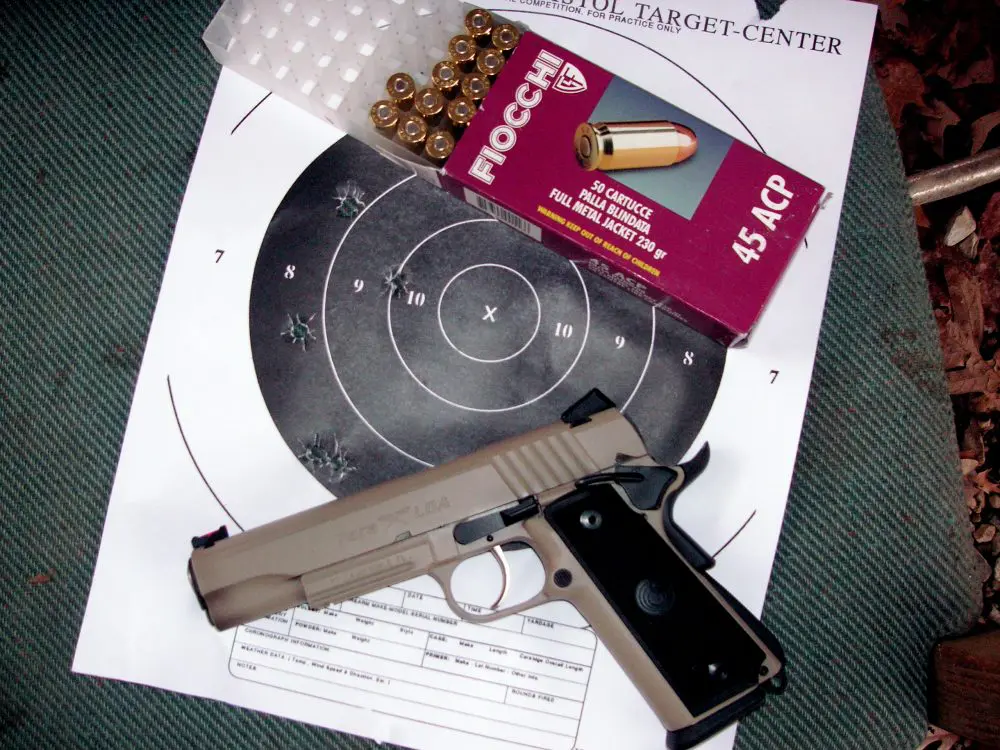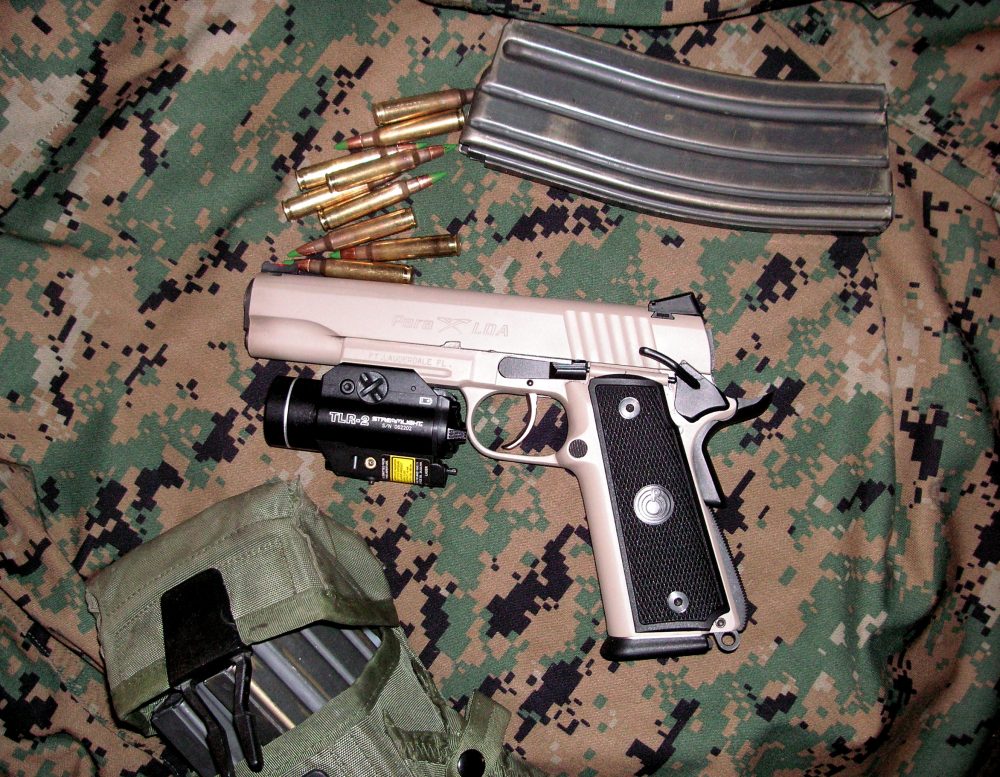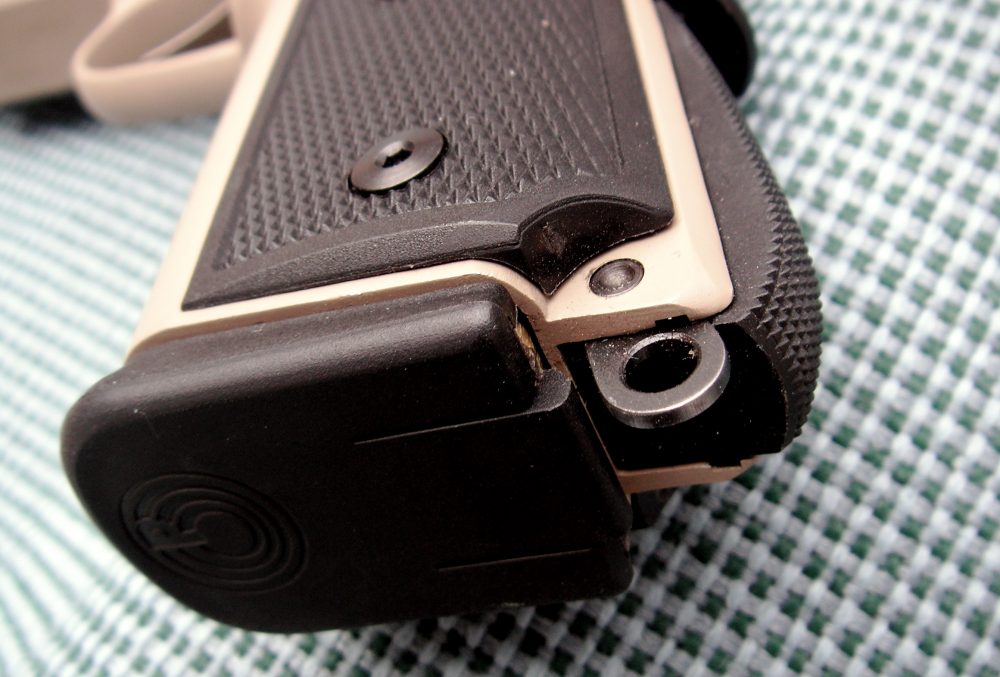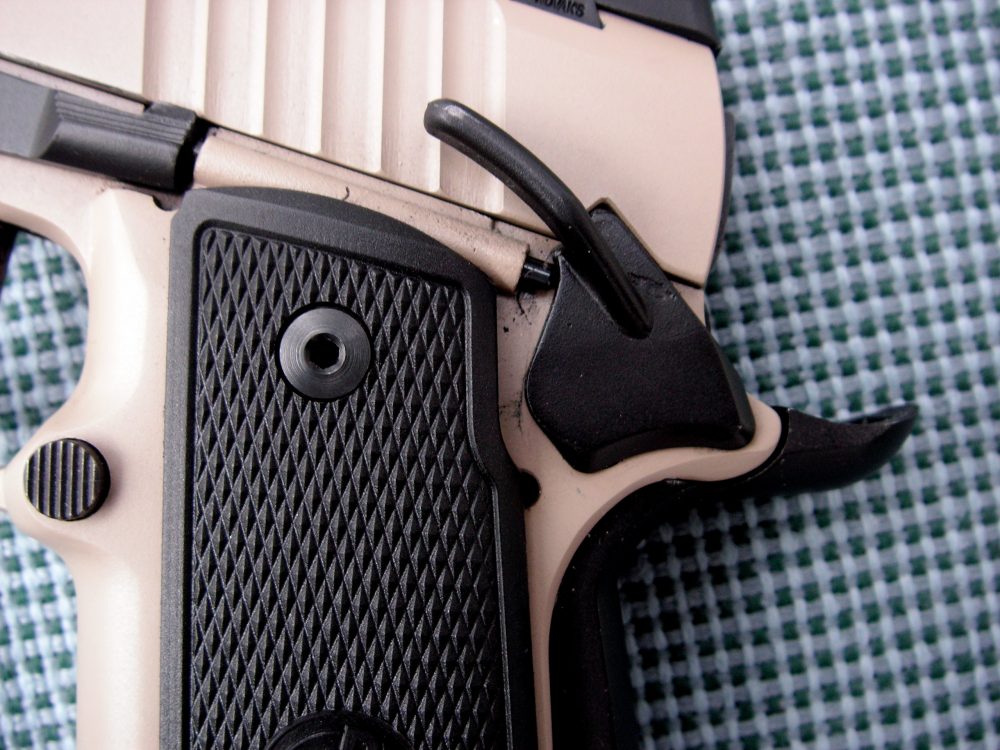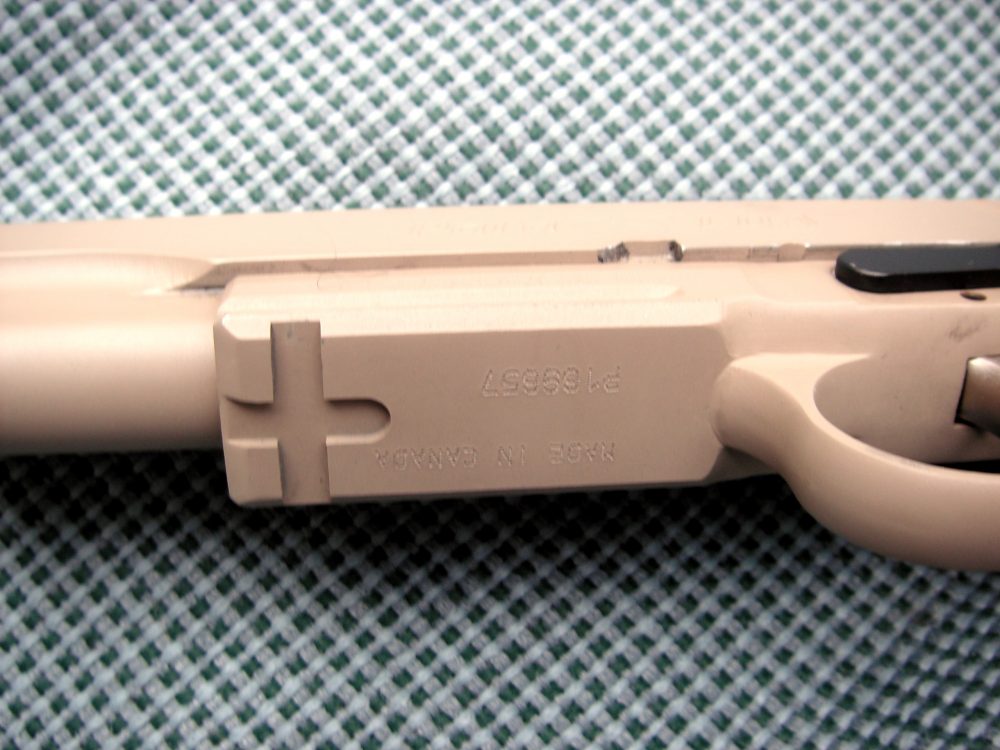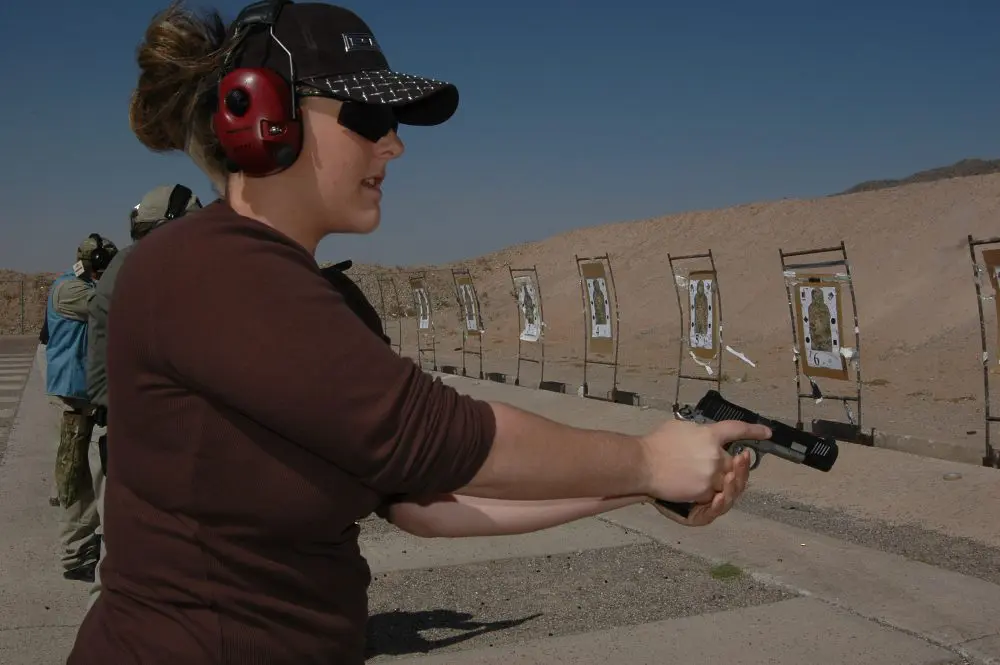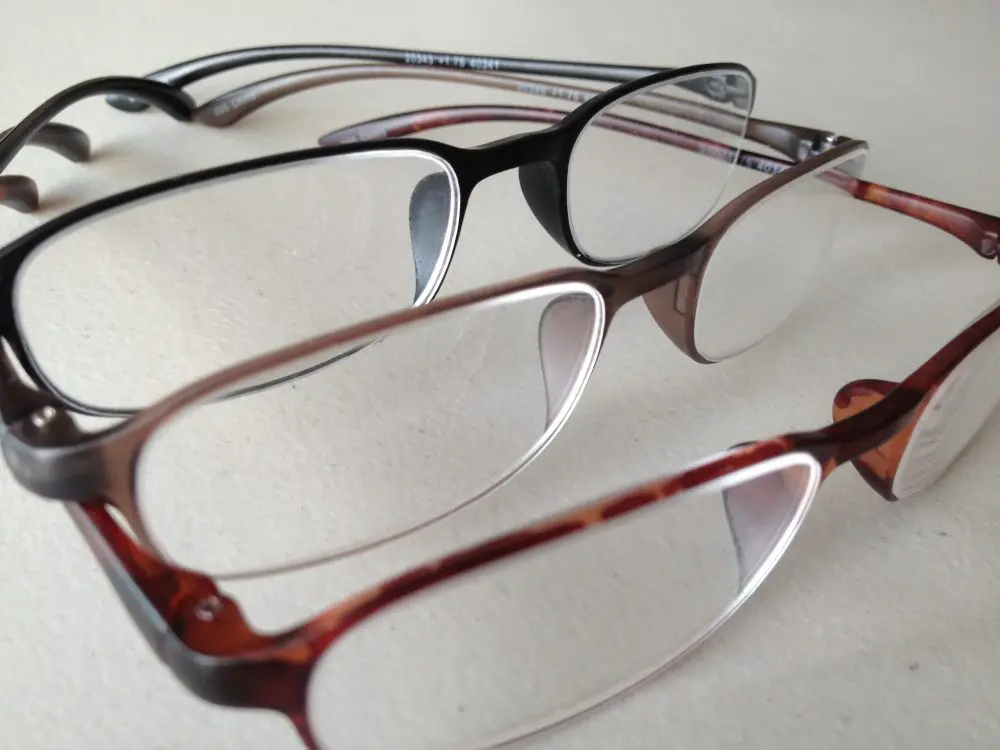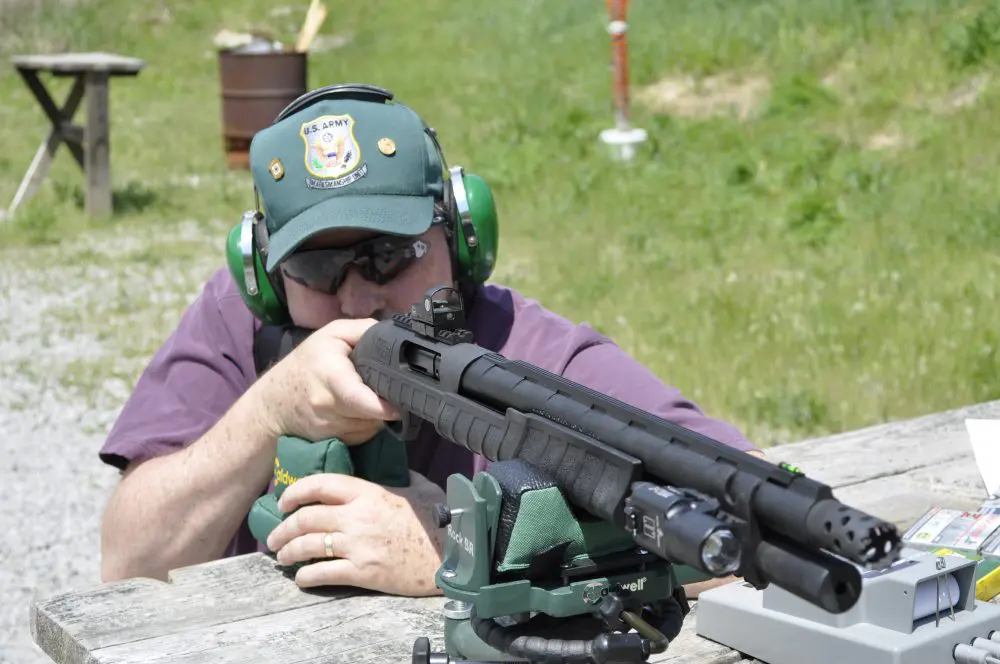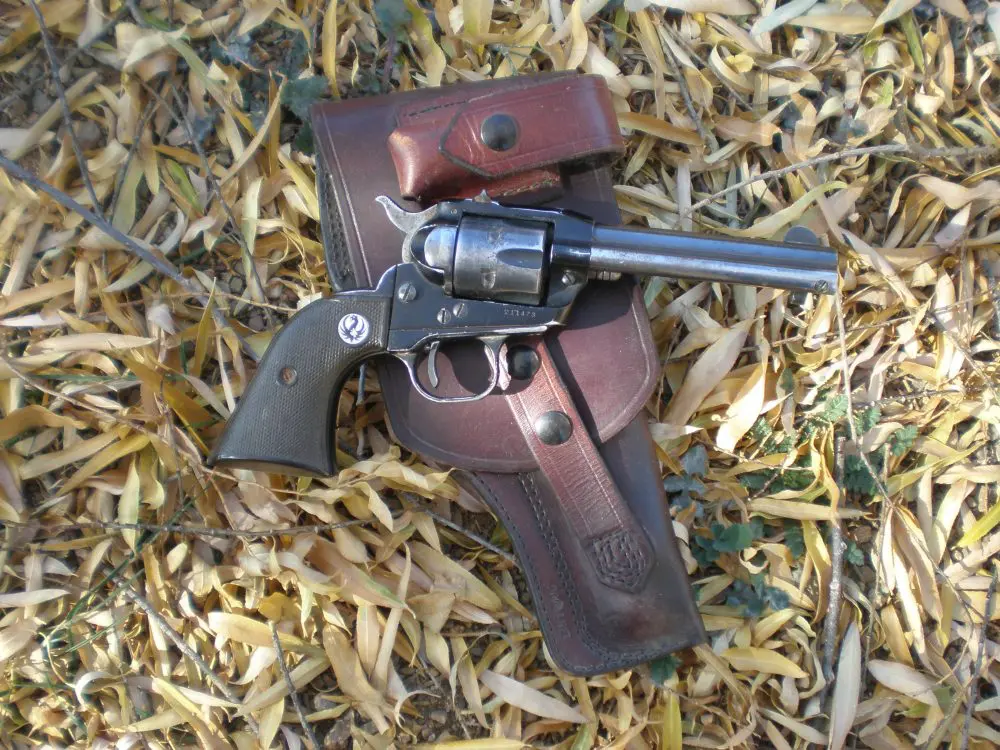[Editor’s Note: On 10 March 10 2006, the name of the program was changed from Joint Combat Pistol to Combat Pistol. In the Fall of 2006, the Combat Pistol program was suspended indefinitely.]
Over the last year and a half I’ve been following with great interest the progress of the U.S. armed forces tests to select a new Joint Combat Pistol. The original Performance Specifications for the new pistol are quite interesting, though I understand they have undergone some evolution and that they may change somewhat before a final pistol is adopted—if one is.
Pistol was intended to be basis for Para’s entry in Joint Combat Pistol trials.
Still, many of the most prominent manufacturers of automatic pistols have developed a pistol designed to meet most or all of the military bid specs. One of the more interesting examples of these is Para-Ordnance’s Coyote Brown Nite-Tac. I thought S.W.A.T. readers might find my test of it more interesting if I evaluated it in light of the original Performance Specifications for the Joint Combat Pistol.
Specs called for the JCP to be chambered for the .45 ACP round, and the Nite-Tac is. The action for the JCP is to be either a DA/SA or a DA only. The Nite-Tac employs Para’s LDA (Light Double Action), which is an excellent form of DAO that allows precise shot placement because of the good trigger pull. JCP Specs specify a trigger pull between 4-6 lbs for an SA pistol and 5-8 lbs for a DAO pistol. The trigger pull of the LDA Nite-Tac should fall well within the DAO range.
Nite-Tac’s lanyard ring is mounted at base of frame.
Magazine capacity specifications for the JCP are written to allow for a range of pistol types. Minimum capacity is eight rounds with the standard magazine; however, specifications also call for a high capacity magazine with a capacity of at least ten rounds as well. Some manufacturers meet this spec with an extension magazine. Para-Ordnance is, of course, well known for its high-cap .45 ACP pistols. The Nite-Tac has a magazine capacity of 14 rounds, so all magazines exceed the ten round specification. The Nite-Tac’s large capacity, double-stack magazine may prove a disadvantage in meeting another one of the JCP specs, though. One spec calls for the pistol to be operable for a range of users that fall between the 5th and 95th percentile of likely operators. Those at the lower end of this spectrum may find the Para’s larger grip a problem, though those with bigger hands toward the top of the spectrum will probably like it. I have average-sized hands and I find the Nite-Tac’s grip comfortable, but near the upper end of grip diameter with which I feel comfortable. The specs mention a modular grip adjustment system to provide “enhanced ergonomics.” The Nite-Tac does not have a modular grip system.
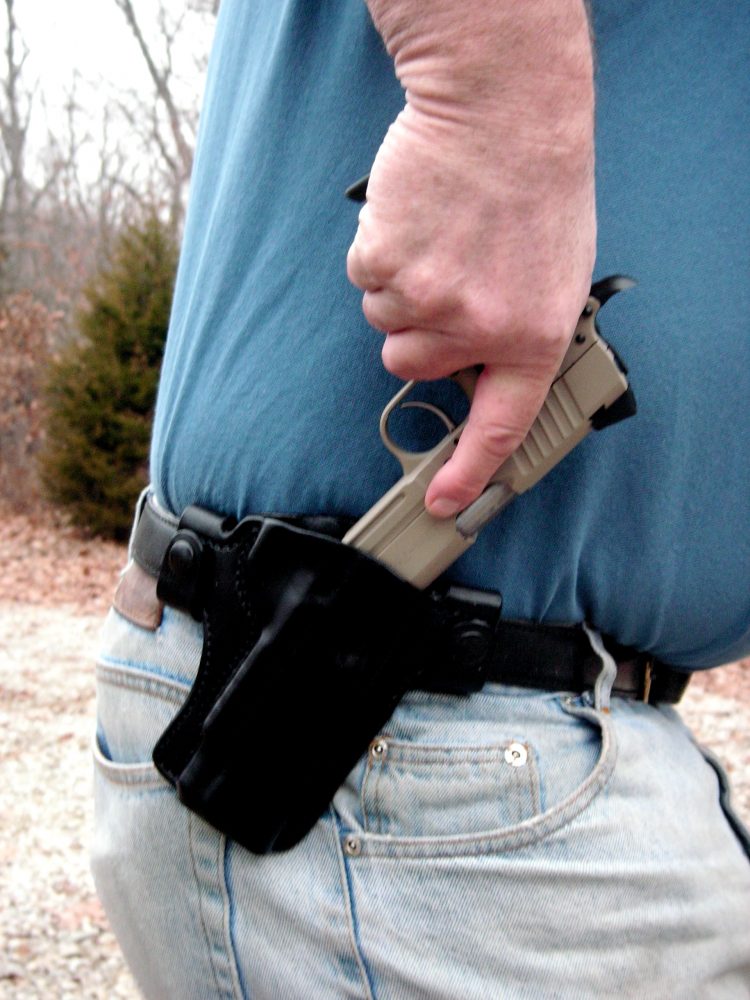
On other size requirements, however, the Nite-Tac is well within specs. With standard barrel, overall length is specified at less than 9.65 inches. The Nite-Tac is 8.5 inches overall. Note that the phrase “with standard barrel” is included because the specs call for the capability of mounting a suppressor; hence, that barrel would extend past the slide and be threaded. Threaded barrels will be available for the Nite-Tac to meet this spec. JCP width is set at a max of 1.53 inches; even at the thickest part of the grip, the Nite-Tac is only 1.32 inches.
The Nite-Tac is good to go on some of the other JCP specifications. The JCP is required to have a MIL-STD 1913 rail located forward of the trigger guard on the lower portion of the frame. The Nite-Tac’s rail meets that specification entirely. The surface finish is non-reflective, requires minimal maintenance, and is Coyote Brown/Dark Earth in color. All of these characteristics meet specs. Actually, some smaller parts are in Para’s Covert Black finish, which makes a nice contrast with the Coyote Brown primary finish.
The Magazine Release/Tactical Reload portion of the specifications requires that the JCP allow the magazine, whether loaded or empty, to drop free of the well when the magazine release is activated. This must occur if the pistol grip is held at any angle from 0 degrees to 45 degrees. The Nite-Tac’s magazine falls clear at the specified angles and even at 60 degrees or more. The specs also call for the JCP to be capable of firing with the magazine removed (i.e., no magazine safety). The Nite-Tac meets this specification.
Traditionally, military pistols are capable of taking a lanyard, and specs for the JCP call for a rigid attachment point for a lanyard that does not interfere with the magazine change or controls. The lanyard ring on the Nite-Tac is well located at the rear of the butt and does not interfere with a mag change unless one gets his hand too far back on the base pad. I did hit it on a couple of fast mag changes and, thus, did not thrust the mag all the way home.
Though a little left, this 25-yard five-shot group shows Nite-Tac is capable of good accuracy.
The JCP Performance Specifications state that, if the pistol has an external manual safety, it must prevent firing when the safety is applied and the trigger is pulled. Even though the Nite-Tac is an LDA pistol, it does have an external safety of 1911 type. I always thought this feature on Para LDAs was most useful for a uniformed police officer since it makes the gun more proprietary if lost in a struggle. Still, it does meet the specification in that it prevents firing if the trigger is pulled while it is applied. The specs do state that if a DA pistol has an external safety, the firer must be able to work it with the firing hand. The safety of the Nite-Tac is easily worked with the firing hand. The Nite-Tac conforms as well to the requirements for an internal safety that prevents firing it if the pistol is dropped or struck.
The JCP specs show a concern about maintenance of the pistol, since they specify that a cleaning kit should be included and that the pistol be capable of quick and easy field stripping. The Nite-Tac field strips in the same manner as a 1911 pistol. For those who are used to the 1911, it is a relatively simple system. However, compared to many contemporary designs, the system is more complicated and employs more small parts that can get lost. I believe the Nite-Tac will have some disadvantages vis-à-vis some other designs that incorporate a more straightforward take-down system with fewer small parts.
Nite-Tac’s thumb safety makes pistol more proprietary should it fall into the wrong hands.
Under the category of Ancillary Equipment, the JCP specifications call for a “Weapon Shot Counter” which records shots fired and incorporates a data collection device that can be connected to a computer. I don’t see any indications that such a counter is incorporated into the Nite-Tac, but I would imagine if Para-Ordnance got a military contract they could do it if required. The idea isn’t really that farfetched, as the SigPro adopted by the French incorporates a computer chip. I do not know what data it is designed to carry or collect. It may just be to determine when a weapon should go in for maintenance. One French contact speculated that the chips would allow the position of each armed agent to be tracked from a security control center in buildings. Another piece of Ancillary Equipment specified is a Force-on-Force Training Module. Since Simunitions conversions are available for 1911-type pistols, this should not be an issue for the Nite-Tac.
JCP specifications include accuracy and reliability benchmarks as well. Fired from rest at 50 meters, the JCP must be capable of a ten-shot group of 3.15 inches or less. Service life of the JCP is expected to be at least 20,000 rounds. Reliability tests for the JCP will require 20,000 rounds to be fired. During each string, 500 rounds will be fired with a cooling period between each string. Within the 20,000 rounds fired, the maximum number of allowable stoppages is ten. Malfunctions are broken into three types: Class III is the most serious and requires the operator more than ten minutes to clear, requires assistance to clear, or requires higher level maintenance. Only four Class III malfunctions are allowed in the 20,000 round durability testing. A pistol will also fail the trials if the same part must be changed more than four times or a total of eight parts must be changed. Alas, I didn’t carry these tests out on the Nite-Tac, but I thought readers might find the testing process that entries for the JCP contract have to undergo of interest.
Nite-Tac’s accessory rail
I fired 150 rounds through the Nite-Tac during my first range session. I know that sounds puny compared to a 20,000 round test, but I usually find that I can test reliability, accuracy and handling pretty well with that much shooting. I have been a fan of Para’s LDA ever since I shot my first pistol with this action. I find it smooth, relatively light and crisp. For carrying a self-cocking pistol hammer down yet ready for instant action, the LDA is hard to beat.
The ability to also use the thumb safety is, as already mentioned, a plus for uniformed officers and for armed civilians as well, since it adds another required operation before the pistol may be used by someone not intended to use it, and if one doesn’t want to use the safety, he doesn’t have to engage it. The thumb safety is very conveniently located, and its operation is second nature to anyone who carries a 1911. However, I would note that if one does carry a Para LDA with the safety on, then he should always carry it in this mode and practice with it in this mode so that flicking off the safety is second nature.
Shown with Streamlight TLR-2 light/laser combo mounted. Note that Para allows easy access to switch for TLR-2.
The sights on the Coyote Brown Nite-Tac are very visible. The rear is a Novak Extreme Duty Adjustable and the front a red Fiber Optic dot in a post. The sight combo was very good for fast target acquisition, as the red dot was very bright and allowed fast indexing in the rear notch. However, one must bear in mind that the red dot is not at the very top of the post, so if the pistol is sighted based on the top of the front post aligning with the top of the rear sight, then the pistol will shoot high if the red dot is aligned with the top of the rear sight. At ranges of 15 yards or less, it shouldn’t be an issue, but for longer range shooting it is a consideration.
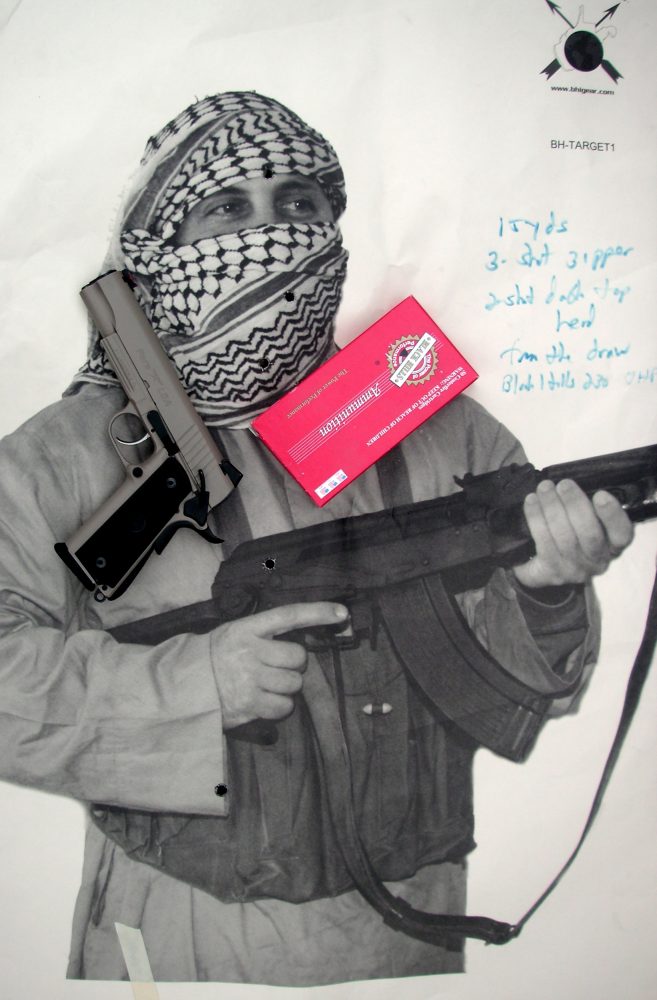
I liked the fact that the Novak Extreme Duty is adjustable, as the Nite-Tac was shooting quite low with the 230-grain Black Hills JHP loads I shot first. I cranked it up as far as it would go and got it close to on with the Black Hills. I had some slower Fiocchi 230-grain FMC loads, and they were about right for elevation at 25 yards. I did have a couple of other thoughts on the fiber optic front sight in regard to the Joint Combat Pistol specifications. The specs say that the sights should be self-illuminating in low light (i.e., night sights). Since Para-Ordnance offers night sights for their pistols, it would be easy to supply them for a Para JCP. The specs also state the sight should be snag resistant. I believe that the rectangular shape of the Nite-Tac’s front sight is not optimum for avoiding snags. I would also note that if the Nite-Tac were supplied with the suppressor barrel for military trials, then higher sights for use with a suppressor attached would be needed. As a result, I doubt the fiber optic front sight would be supplied on a military production pistol. And a final note, I don’t think the fiber optic sight would hold up well to exposure to military issue “bug juice,” which can have a corrosive effect.
Having said all that, I like the fiber optic sight for shooting and found it aided me in sighting. At 25 yards, a friend who was with me shot a five-shot group of just over 4.5 inches using the Fiocchi 230-grain ammo. The group was a bit left, but was certainly quite acceptable and was the best either of us shot at that range. I wanted to try the Nite-Tac for fast handling to see how the combo of the large grip and the LDA worked. I set up a Blackheart terrorist target at ten yards and first fired a three-shot “zipper” running up from the navel to the neck. Then, I did a quick double tap in the head. All were well-placed, though I drifted a bit right on the two head shots. I certainly did not find the Nite-Tac’s thick grip a problem. In fact, I found that the combo of the Para’s ribbed front strap, checkered backstrap and checkered grips, along with the hand-filling frame, kept the pistol from shifting during fast shooting. The LDA action was smooth and consistent since there was no transition between double action and single action as there would be on a DA/SA pistol.
I performed some drills from the holster with the safety on. One advantage of the Nite-Tac’s slide being of 1911 configuration is that it fits most of the holsters I use for my Springfield Operator or Kimber TLE/RL. The only exceptions are the Don Hume and DeSantis models, which are designed with a safety strap for cocked and locked carry. In fact, I was using a Mitch Rosen Premier holster from the Express Line for my Kimber TLE/RL when I was doing engagement drills with the Nite-Tac from the draw. Since good holsters can get expensive, knowing that those I already have for 1911-type autos with rails will work for the Nite-Tac is another plus.
Once I had done various accuracy tests, I wanted to fire another 100 rounds or so at hanging plates to get used to handling the Nite-Tac and also to check reliability. This pistol incorporates Para’s Power Extractor (PXT) technology, which is intended to enhance reliability. The Nite-Tac was certainly reliable. In 150 rounds of three different types of ammo, I had no malfunctions.
When I got home from the range, I wanted to try the Nite-Tac’s light rail. I found that the specs for the rail seem to preclude use of some lights and/or lasers. Neither the Insight Technology nor the SureFire tactical light would slide onto the rail. I did find that a Streamlight TLR-2 installed easily. The TLR-2 employs a slightly different system than lights that slide onto the rail. It has a stud that may be pressed to open the slide, which fits on the rails. Once the cross bar is positioned correctly in the rail’s slot, the stud is released, causing the TLR-2 to clamp onto the rails. The stud may then be tightened down to lock the light in place. Using the TLR-2, I did my tests to make sure that I could reach the controls for the light with my trigger finger without shifting my shooting grip—I could.
Overall, I like the Coyote Brown Nite-Tac. It offers Para’s LDA and high magazine capacity along with .45 ACP chambering. It will be interesting to see how the Joint Combat Pistol trials progress if and when they start again. In any case, for those who like LDA Paras, the Coyote Brown Nite-Tac offers an extremely handsome and useful pistol. MSRP is $1,049.00.
SOURCES:
Para-Ordnance Manufacturing, Inc.
Dept. S.W.A.T.
980 Tapscott Road
Scarborough, Ontario M1X 1C3
CANADA
(416) 297-7855
www.paraord.com
Mitch Rosen Extraordinary Gunleather
Dept. S.W.A.T.
300 Bedford Street
Manchester, NH 03101-1102
(603) 647-2971
www.mitchrosen.com
Streamlight, Inc.
Dept. S.W.A.T.
30 Eagleville Rd.
Eagleville, PA 19403
(610) 631-0600
www.streamlight.com
